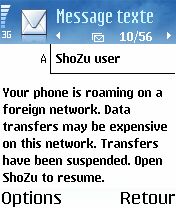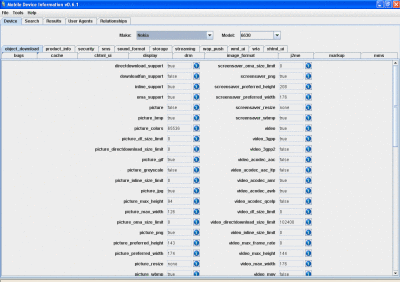A few weeks ago I wrote about the w3c releasing a working draft on the Mobile Web Best practices. I read it and at the end I found myself quite happy with what we have done with our mobile blogs. Of course there is still room for improvement but we have already implemented almost all the best practices, sometimes even more. I thought it might be interesting to go through a few of them in a “Mobile web Best Practice” serie.
Implementations should take all reasonable steps to find out about the device/browser (client) capabilities, adaptation and other transformation that takes place for any instance of an access to a ressource.
Techniques > CC/PP, UAPROF, CSS Media Queries, DDWG output, DIWG material, Wurfl,…
@Kaywa > We use the latest. I found out about Wurfl when developping iFeedYou and bring it at Kaywa. WURFL is “just” a XML file that contains all informations in a hierarchical way needed to establish the context of the device. It contains actually much more information than we need so we use a lighter version that contains only the informations to determine what markup should we serve. It is also used to determine the screen size to resize images and for a few other things.
Since on KAYWA blogs you can also publish sound and video (also by MMS or email) we will also in the futur let know the user if he can read the media on its mobile or even better transform it.





